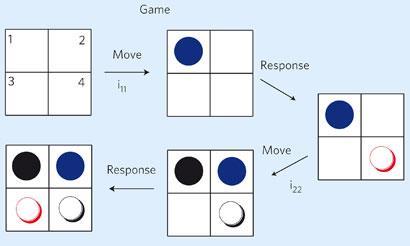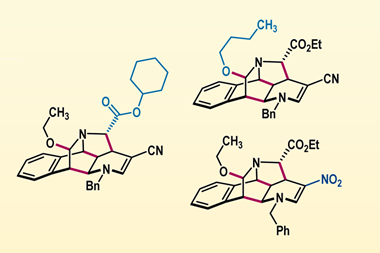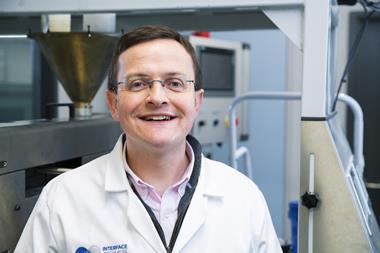A new biological computer consisting of a solution of enzymes shows that assemblies of molecules can be programmed to adapt to a range of stimuli
It might not be Deep Blue, the chess-playing supercomputer, but US researchers have shown that a solution of biological molecules can be taught to play any strategy of a simple board game against a human opponent and never lose. The programmable biomolecular ’automaton’ demonstrates how molecules can behave in a way that extends beyond their ’hard-wired’ chemical function, says Milan Stojanovic of Columbia University, New York, who lead the research team.
The simple game of tit-for-tat is played on a set of four squares, numbered 1,2,3 and 4. The human player nominates any square, the automaton chooses a free square, the human player chooses one of the two remaining squares and the automaton the last remaining square; the automaton wins by having the same number of squares as the human player at the end.
The automaton consists of 16 enzymes whose substrates are oligonucleotides. Four of the enzymes act on one of four specific oligonucleotides, the ’input’ oligonucleotides. The remaining 12 enzymes act on pairs of the four inputs. When an enzyme meets its appropriate inputs the reaction produces fluorescence.
The solution of enzymes is divided into four wells - the playing board as it were. The human player selects a square on the board by adding the corresponding input oligonucleotide to all wells: input molecule 1 indicates that the player is choosing square 1, input 2 square 2 and so on.

Initially all the enzymes are deactivated but each can be selectively activated by the programmer by the addition of a ’training oligonucleotide’. If the programmer wants to activate an enzyme to be responsive to a human move to square 1 then he/she has somehow to tell the automaton ’when input 1 is chosen, you respond with well 2’. To do this, the enzyme responsive to input 1 is activated only in well number 2, but not in the other three wells, by adding the corresponding training oligonucleotide. For the second move the programmer says ’If the human next chooses square 3 [by adding input 3 oligonucleotide to all the wells], you respond in well 4’, choosing to activate in well 4 the enzyme responsive to the presence of both oligonucleotides 1 and 3.
In this way, through a ’training session’ all possible permutations can be covered so that the automaton is programmed to respond to any combination of moves. The total number of possible strategies dictating how to respond to the human move is 34, or 81.
Stojanovic says that the idea of the work is not to make a computer that can compete with silicon, but rather to explore how biological molecules can be programmable, multifunctional and adaptable.
Experts in the field are impressed by the work. Erik Winfree of the California Institute of Technology in the US woks on molecular programming and says, ’It’s the first serious attempt to construct an artificial chemical system that learns from examples and I’m sure it will stimulate a lot of productive controversy and inspire a whole line of research.’
Tom Ran who works on biomolecular computers at the Weizmann Institute of Science in Israel comments that by introducing the concept of ’reconfigurability’ into molecular computing the research ’brings closer the goal of a multipurpose reprogrammable molecular computer.’
Simon Hadlington
References
R Pei et al, Nature Nanotechnology, 2010, DOI: 10.1038/nnano.2010.194






No comments yet